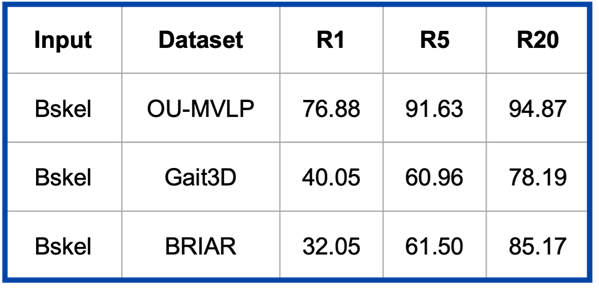A System That Performs Fast And Unsupervised Image Processing That Results In A Novel Shape-Based Feature
Full Description
Background
Recognizing individuals across various camera views and challenging conditions is crucial for applications like surveillance and authentication. Traditional methods using facial recognition or gait analysis face limitations in long-range scenarios. Facial recognition becomes unreliable at a distance, while gait analysis requires multiple frames and can be affected by factors like pose variations and atmospheric conditions. This necessitates exploring alternative approaches for reliable human recognition in uncontrolled environments.
Technology
Prof. Bhanu and his team have developed a novel representation (DIRB and SSRNet), a system designed for human recognition using single-frame silhouettes. The technology leverages the inherent advantages of silhouettes, such as robustness to changes in clothing and lighting, and leverages a new feature descriptor called Bskel. The developed process generates a coarse representation of the human skeleton which proves to be highly robust to distortions. Single-frame Silhouette-based Recognition Network (SSRNet), incorporating Bskel, extracts feature embeddings using a High-Resolution Network (HRNet) architecture and employs a multi-objective loss function for optimized training.
Images

Overview of SSRNet

Closed set detection results (in %) using SSRNet for various datasets - OU-MVLP (excluding identical-view cases), Gait3d and Briar.
Advantages
Several key benefits of this technology are:
- Does not rely on multiple frames
- Simplifies recognition process
- Reduces computational complexity
- Robust to challenges like varying cloting, lighting and environmental conditions
- Superior to gait recognition models even with limited frames
- Significantly augments accuracy of traditional grayscale image-based recognition.
Applications
- Surveillance
- Access control and authentication
- Smart environments
Inventor Information
- Please review all inventions by Prof. Bhanu and his team at UCR.
- Please visit Prof. Bhanu's group website to learn more about their research.
Related Materials
Patent Status
Patent Pending
Contact
- Venkata S. Krishnamurty
- venkata.krishnamurty@ucr.edu
- tel: View Phone Number.
Other Information
Keywords
computer vision, image recognition, body biometrics, face recognition, biological system modeling, imaging, grayscale, distortion, task analysis, surveillance, screening, smart environment, authentication
